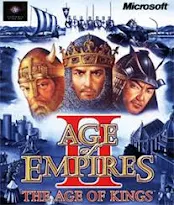What’s New in Civilization II?
Improved Graphics:
Civilization II transitioned from the top-down, tile-based graphics of its predecessor to an isometric perspective, offering a clearer and more immersive view of the world.Expanded Civilizations:
The game included a larger roster of civilizations, each with its unique identity and leaders, making the game feel more dynamic.Advanced Diplomacy:
- Players had more nuanced options for alliances, trade, and negotiations.
- AI leaders showcased unique personalities, from warmongers to pacifists, adding depth to interactions.
New Units and Technologies:
- Players could now field modern units like stealth bombers and mechanized infantry.
- A richer tech tree introduced new strategies and paths to victory.
Wonders of the World:
- Wonders were reimagined with greater strategic importance, providing powerful bonuses.
- Players also had access to a Civilopedia, a helpful in-game reference for wonders, units, and technologies.
City Improvements and Micromanagement:
- Players could build a variety of structures, such as libraries and aqueducts, each with unique benefits.
- Balancing growth, happiness, and military production became even more critical.
Multiple Victory Conditions:
- Players could win through military conquest, diplomatic alliances, or the space race, which involved launching a spaceship to Alpha Centauri.
Gameplay Highlights
- Customizable Maps: Players could create and play on their own maps, adding a personal touch to the game.
- Improved Combat: Stacking units and a greater variety of military options made warfare more strategic.
- Governments and Policies: Players could choose different government types, from monarchy to democracy, each affecting the economy, happiness, and military strength.
The Advisors System
Civilization II introduced advisors, who provided humorous and helpful guidance. Each advisor represented a specific domain (military, science, economy, etc.) and offered advice tailored to the player’s current situation. Their quirky personalities added charm to the game.
Expansion Packs and Scenarios
- Conflicts in Civilization (1996): Added new historical and fictional scenarios, such as the Roman Empire or World War II.
- Fantastic Worlds (1997): Focused on fantasy and science fiction scenarios, introducing unique gameplay twists.
- Test of Time (1999): Extended the lifespan of Civilization II with updated graphics, new campaigns, and the ability to explore alien worlds.
Legacy and Impact
Civilization II’s impact on gaming cannot be overstated:
- It became a benchmark for turn-based strategy games.
- Its success led to further installments in the Civilization series, each building on its innovations.
- The game remained playable and beloved for years, with dedicated fan communities creating custom scenarios and mods.
Why Civilization II Stands Out
Civilization II wasn’t just an improvement—it was a reinvention. It captured the spirit of the original game while expanding its scope and depth, ensuring that every decision mattered. Whether you were navigating a diplomatic crisis, planning a military campaign, or racing to colonize the stars, Civilization II offered endless possibilities for strategic mastery.












